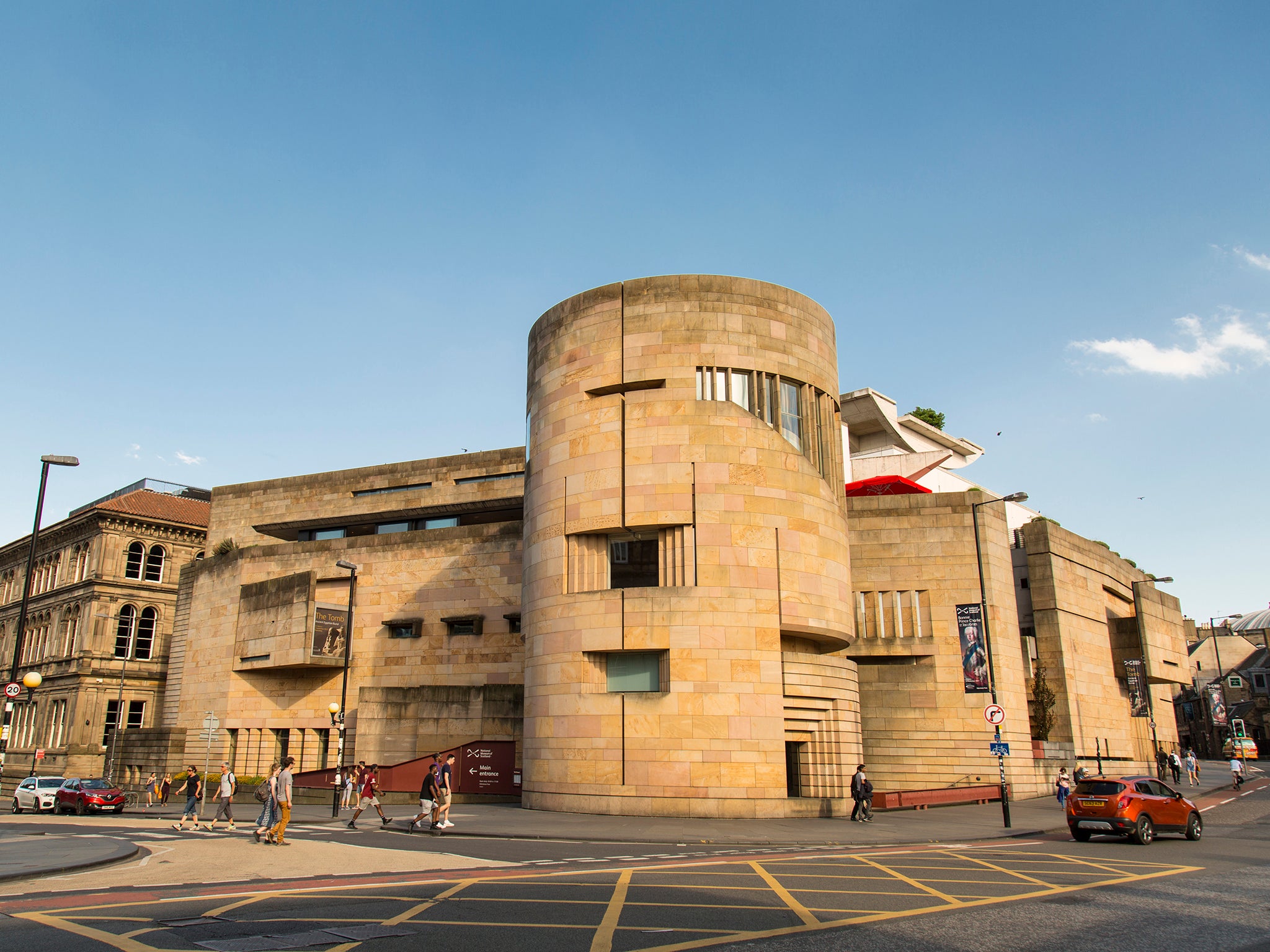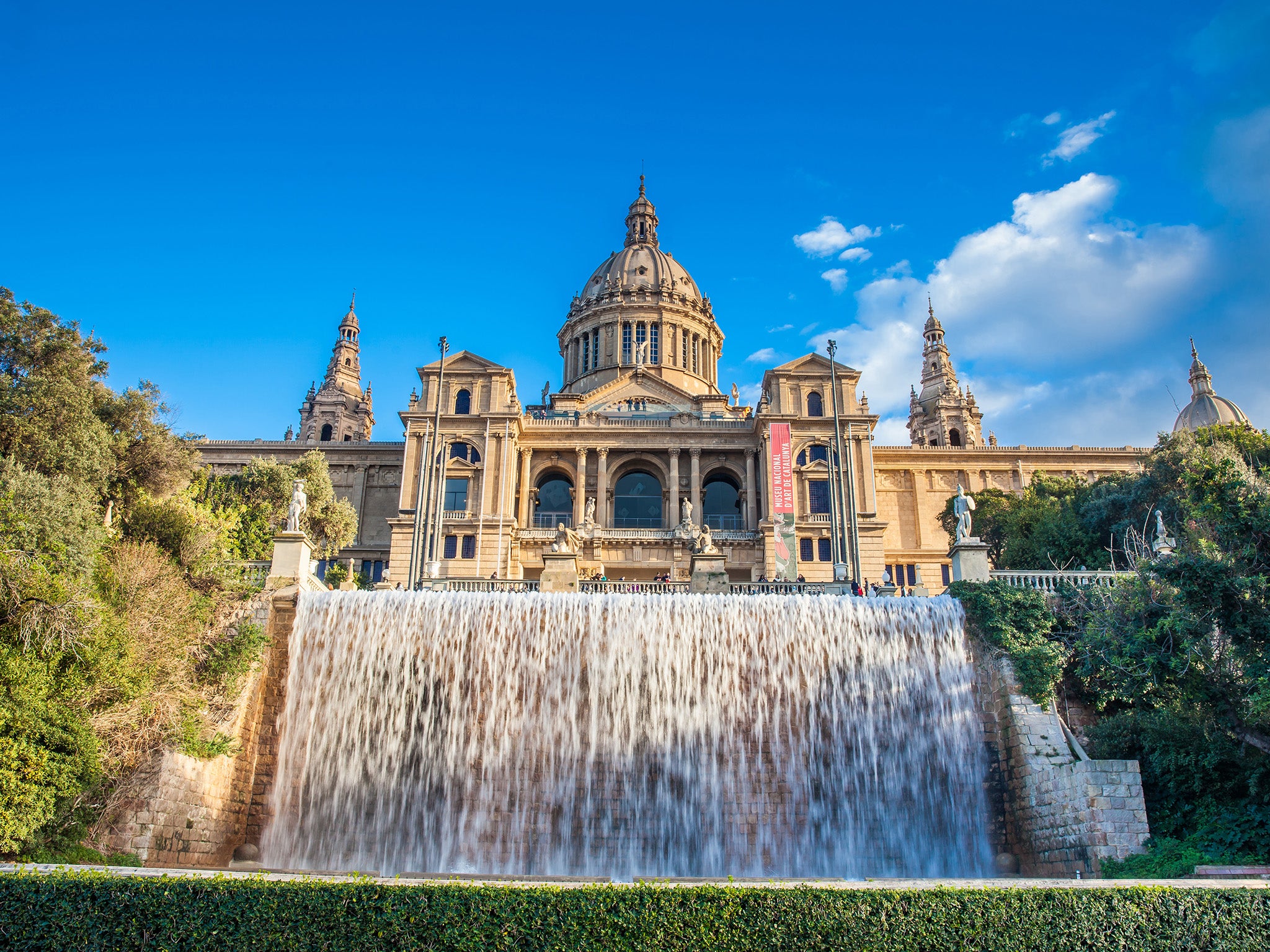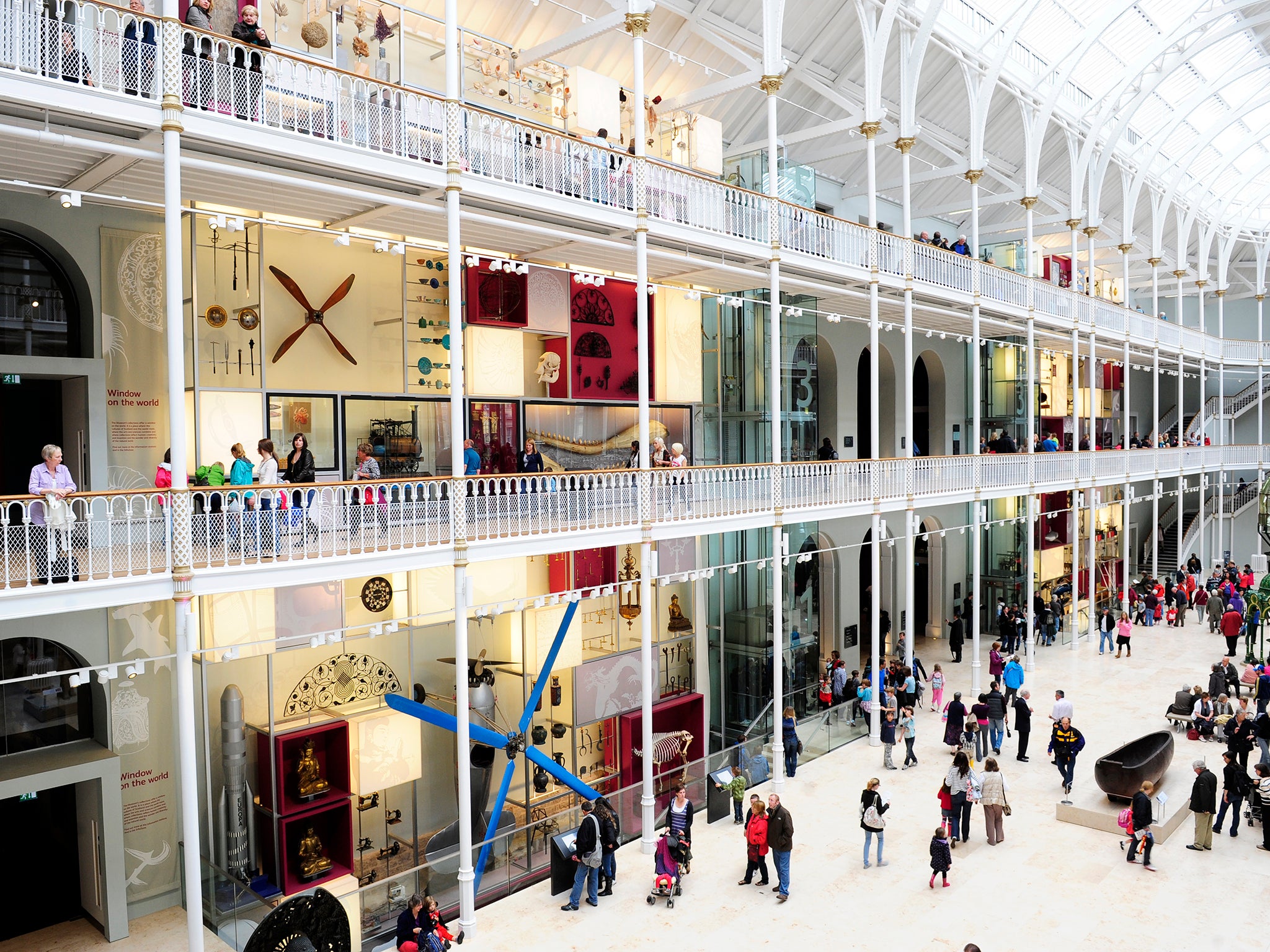What the National Museum of Scotland tells us about the nation’s internationalism
The £80m overhaul of the National Museum of Scotland has been completed at a critical time in Scotland’s history, William Cook writes


Here in Edinburgh, in the basement of the National Museum of Scotland, there is an ancient relic which encapsulates Scotland’s age-old internationalism, and the modern internationalism of this newly renovated museum. This beautiful axehead was found in the Scottish Borders but it’s not from Scotland, it’s from central Europe – and it’s been here for 6,000 years.
Several floors above, in the museum’s revamped East Asia galleries, curators from a range of countries are celebrating a landmark in the museum’s history. After 15 years, the £80m overhaul of this historic institution is finally complete. The project was completed on time and on budget. The museum’s 29 galleries look magnificent. By any measure, it’s been a spectacular success. More than two million people visit the museum every year, making it Britain’s most popular visitor attraction outside London – not bad for a venue in a city with a population of half a million, and in a country with a population of just five million. However, this relaunch comes at a critical time in Scotland’s national history. When this redevelopment began, in 2004, who would have thought it would be completed just as Scotland braces itself to leave the EU?
In case anyone needs reminding (and it seems quite a lot of English voters do), Scots voted to remain in the European Union in 2016, by a considerably larger margin than they voted to remain in the United Kingdom in 2014. According to English Brexiteers, this “will of the people” doesn’t count because Scotland is merely part of the UK, rather than a distinct and separate country – and in a narrow legalistic sense they’re right. But as you wander around this museum, which charts the history of the Scottish nation and its relationship with the wider world beyond the British Isles, you realise there’s nothing eternal or automatic about Scotland’s place within the UK.
The history of the National Museum of Scotland mirrors Scotland’s shifting relationship with Great Britain over the past few hundred years. The museum’s roots stretch back to the Society of Antiquaries of Scotland, founded in 1780, at the height of the Scottish Enlightenment, when Edinburgh, then as now, was a European cultural and intellectual hub.
In 1861 the current building was erected here in Chambers Street. Prince Albert laid the foundation stone. Originally called the Industrial Museum of Scotland, it was the UK’s first national museum outside London. The central atrium, flooded with natural light, was inspired by London’s Crystal Palace, where Albert staged his Great Exhibition in 1851. The museum’s mission was “to bring Scotland to the world, and the world to Scotland”. That mission statement held true in 1861 – it still holds true today.

Over the next century, this museum was renamed several times. It was the Edinburgh Museum of Science and Art, and then the Royal Scottish Museum, before finally becoming the National Museum of Scotland in 1985. In 1998 a modern wing was added to the original Victorian building, and since 2004 the Victorian building has been undergoing an enormous renovation programme. Now finally, after 15 years, that renovation is complete.
So is this the end of the story, the conclusion of a process which began back in 1780? Hardly. A stroll around this museum confirms that history is always unfinished business – particularly here in Scotland, in a national museum in a country which hasn’t been an independent nation for more than 300 years. For visitors, from Britain and abroad, this ambiguous status begs the question: what is the purpose of a national museum in a land that is not (yet) a nation? Is it a sop to rebellious Scots, to appease their nationalist ambitions? Or is it a cultural harbinger of full independence – a sign of things to come?
As these displays remind us, England and Scotland have shared a monarch since 1603, when James VI of Scotland inherited the English crown from the childless Queen Elizabeth I. What’s less widely known – outside Scotland, at least – is that the Scottish parliament stumbled on for another century, until the Act of Union in 1707. Since the foundation of the Scottish parliament, just down the road from here, in 1999, Scotland is back where it was in the 17th century – a country with its own parliament but subservient to Westminster. A century from now, will Scotland be independent again?
Scotland isn’t the only European nation within a nation, and several of these quasi-nations have their own national museums. Their respective histories reveal a good deal about these statelets’ differing attitudes to independence. The Bayerisches Nationalmuseum in Munich was founded in 1855 by King Maximilian II of Bavaria, when the region was still an independent nation. Bavaria voted for union with the Deutsches Reich in 1871, and has remained part of Germany ever since, yet it retains many of the cultural trappings of a nation state, including this national museum. A significant minority of Bavarians still pine for a return to statehood (a YouGov poll in 2017, at the height of the refugee crisis, put the number as high as 32 per cent), but as immigration falls it looks as if these separatist ambitions have peaked.
Conversely, the Museu Nacional d’Art de Catalunya, in Barcelona, reflects far stronger independence aspirations. Despite its long history as an independent country, Catalonia has been part of Spain since 1715, and until 2004 the Palau Nacional in Barcelona merely housed the Museu d’Art de Catalunya. In 2004 it was renamed the Museu Nacional d’Art de Catalunya, and in 2017, when Catalonia held an (illegal) independence referendum, the Palau Nacional was a popular focal point for pro-independence demonstrations.

At present, Scottish independence seems to sit somewhere between these two positions. In 2014 Scots voted to remain in the UK, by 55.3 per cent to 44.7 per cent, but Scotland’s subsequent vote to remain in the EU, by 62 per cent to 38 per cent, puts the Scottish parliament on a collision course with Westminster. The National Museum of Scotland is careful not to take sides in these divisive debates. They don’t need to. The exhibits speak for themselves. Scotland may leave the EU and may remain in the UK, but the contents of this museum show Scotland has always been a European country, as much as a British one.
Entering the wing of the museum devoted to Scottish history, you’re confronted by a cri de coeur from Robert the Bruce: “As long as one hundred of us remain alive, we will never on any conditions be brought under English rule.” On the opposite wall is a similarly stirring pronouncement from the Declaration of Arbroath (the letter the barons of Scotland sent to Pope John XXII in 1320, confirming Scotland’s independence, and its right to resist the English by force): “For we fight not for glory nor riches nor honours, but for freedom alone, which no good man gives up except with his life.”
For an English visitor in particular, what is unfamiliar (and instructive) about this display is the pan-European focus, and the refreshing absence of Anglo-centric emphasis. You realise that, for long periods of its history, Scotland’s relationship with England was nothing special. The Romans occupied all of England for several centuries and left a lasting mark upon it. Their partial incursions into Scotland were short and insubstantial. During the dark ages, Scotland enjoyed closer links with Ireland than England. As the old Roman roads crumbled away, it became far easier for Scots to sail to Ireland than to trek to England. The Irish Sea wasn’t a barrier but a busy highway.
There was nothing inevitable or preordained about the Act of Union in 1707. Like a lot of historical turning points, it owed a good deal to happenstance. At the end of the 17th century, despite having shared the same monarch for almost 100 years, the Kingdom of Scotland was still independent. And with better luck and better judgement it might well have remained so. If only the Scottish government hadn’t invested a quarter of Scotland’s wealth in a new colony in Panama, it might still be independent today.
Like a lot of heroic failures, the idea was inspired. By establishing a base in Panama, on the isthmus between North and South America, Scotland would control the growing trade between the Pacific and the Atlantic, anticipating the Panama canal by 200 years. Mindful of the Romans, and the new empire they hoped to build, they called this new colony Caledonia.
If Caledonia had been successful, Scotland might have become a world power, with no need of England. However, the English government did its best to scupper the venture, colluding with the East India Company in a trade blockade. The colony collapsed, sparking a financial crisis in Edinburgh. If anything, the collapse in national confidence was even more severe. Seven years later the Scottish parliament voted narrowly for union with England – and that was the end of the Scottish parliament until 1999.
Of course this isn’t new information, but it’s a shock to English eyes to see it presented here so prominently, and so starkly, rather than buried in the footnotes of a dry and dusty history book. I studied this stuff when I did my history degree, but I never knew about the £20,000 in bribes the English paid to Scottish politicians to push the Act of Union through the Scottish parliament, and vote for their own extinction. In the light of this betrayal, the Jacobite rebellions of 1715 and 1745 make a lot more sense.
The top floor of the museum is devoted to Scotland in the 20th century. The exhibition Scotland: A Changing Nation is a vivid picture of where Scotland stands today. Here you’ll find Jimmy Reid, the Scottish trade unionist, and Winifred Ewing, the pioneering SNP politician. Here you’ll find Margaret Thatcher, opining that: “We English, who are a marvellous people, are really very generous to Scotland.” The display lets you draw your own conclusions. The exhibition concludes with the opening of the Scottish parliament, designed by the Catalan architect Enric Miralles. “We have a building which is more than a building,” said the Scots poet Edwin Morgan, and he’s right.
So what does the rebirth of this museum tell us about the rebirth of Scottish nationalism? This museum isn’t a nationalistic project, as its curators are at pains to point out. The National Museum of Scotland is devoutly, resolutely apolitical. It flies no flag for any party. Yet Scottish politics has flowed in a very different direction since 1998 when this museum was last expanded: an independence referendum (defeated); an EU membership referendum (won in Scotland but lost across the UK, thanks to Brexit votes in England); and a resurrected Scottish parliament, reconvened after 200 years.
In party politics, the biggest story by far has been the rise of the Scottish National Party, now the governing party here in Scotland. These have been seismic changes, and though this museum’s impartiality is admirable, it wouldn’t be doing its job if it didn’t reflect this tectonic shift.
The internationalism of this museum, and the growing internationalism of Scotland, is reflected in this museum’s perspective, and the nationalities of its staff. The three curators I spoke to, entirely at random, were Chinese, French and German. Time was, talent tended to drift south from Scotland. Now, increasingly, it’s the other way around. The museum’s director, Dr Gordon Rintoul, is a Scot who returned to Scotland from England.
“We’ve certainly attracted a substantial number of people from outside Scotland, and I think people have come here because they sense an opportunity to do something different, an opportunity to make a difference,” says Rintoul. His curator of Chinese collections, Dr Qin Cao, is a case in point. Originally from China, she worked in London and Oxford before she relocated to Edinburgh. “It is a very vibrant place,” she says.
“We have so many visitors coming from all over the world,” says Friederike Voigt, a senior curator who was born and raised in Germany. “In a way what makes Scotland great is the same thing that makes this museum great,” says Dr Xavier Dectot, keeper of art and design at the musuem, who comes from France. I know what he means. It’s big enough, but it’s small enough. People feel connected here.

“There’s a greater awareness that we’re actually dependent on other people, so we want to interact,” adds Voigt. “It’s very outward looking,” concurs Dectot. “Not only do we feel Scottish, but the other Scots don’t perceive us as anything but Scots.” If only this were true in England.
“A large part of what defines the architecture of this city is late 18th century – neoclassical – that’s something that is very European,” says Dectot, who personifies Scotland’s Auld Alliance with France, and its cultural affinity with the continent. And now the street life is catching up. The city always used to feel cosmopolitan in August during Edinburgh Festival Fringe. Now it feels cosmopolitan all year round. “Everyone in the city has responded to that,” says Rintoul. “That does actually give the city a more international feel.”
Scottish devolution has had a direct effect on the evolution of this museum. “A key point for this project was the strong support from Scottish government,” Rintoul tells me. It doesn’t hurt that the Scottish parliament, in Holyrood, is just a short walk from the museum. “It’s clearly easier to argue your case.” It’s also clearly easier to secure public funding when the public keep coming in such numbers. The museum’s recent Mary Queen of Scots and Bonnie Prince Charlie exhibitions were both hugely popular. Their popularity reveals a growing appetite for Scottish heritage, particularly for shows like these, which re-evaluate the mythic elements of Scotland’s past.
There’s definitely been a resurgence in Scottish history as an academic discipline. As a consequence we know a lot more about whole areas of Scotland’s history than was the case 20 or 30 years ago
“Since the time of devolution there’s been much increased interest in Scotland’s history. There’s definitely been a resurgence in Scottish history as an academic discipline. As a consequence we know a lot more about whole areas of Scotland’s history than was the case 20 or 30 years ago.”
Although Edinburgh feels more international now, Scots internationalism is nothing new. “Scots have always engaged with the rest of the world. These galleries, throughout the whole museum, are replete with items that were acquired by Scots who were abroad, as missionaries or to seek their fortune or in military service, and bringing things back to Scotland.”
Speaking personally, as a Londoner who’s spent more time in Edinburgh than in any city outside London, I grow to love Scotland more with every visit, but I also become more and more aware of how different it is from England. Without Brexit, the National Museum of Scotland might have remained what it has been for more than a century – an expression of national identity for a nation within a nation – a Bavarian model, if you like. After Brexit, it looks destined to become the focal point for a more Catalan model, whether these curators like it or not. What an exquisite irony that the Conservative and Unionist Party, of all parties, has brought the Act of Union to its current crisis point! What a fascinating exhibition that will make, in 20 or 30 years to come.
Join our commenting forum
Join thought-provoking conversations, follow other Independent readers and see their replies
Comments
Bookmark popover
Removed from bookmarks